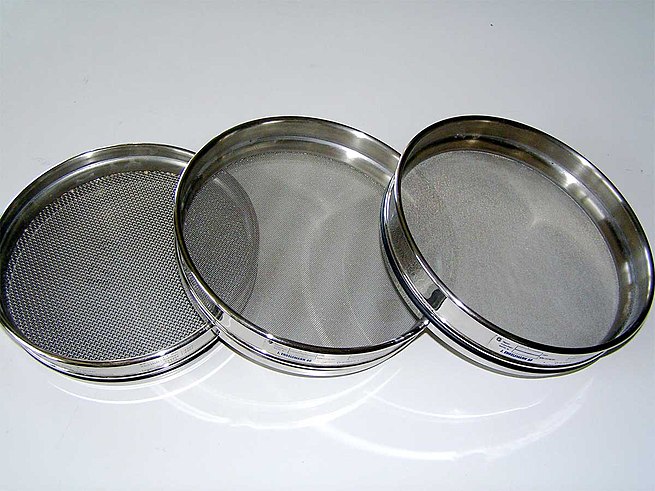Colandernoun
A bowl-shaped kitchen utensil with holes in it used for draining food such as pasta.
Colandernoun
A utensil with a bottom perforated with little holes for straining liquids, mashed vegetable pulp, etc.; a strainer of wickerwork, perforated metal, or the like.
Colandernoun
bowl-shaped strainer; used to wash or drain foods
Colandernoun
a perforated bowl used to strain off liquid from food after washing or cooking.
Colander
A colander (or cullender) is a kitchen utensil used to strain foods such as pasta or to rinse vegetables. The perforated nature of the colander allows liquid to drain through while retaining the solids inside.
Sievenoun
A device with a mesh bottom to separate, in a granular material, larger particles from smaller ones, or to separate solid objects from a liquid.
Sievenoun
A process, physical or abstract, that arrives at a final result by filtering out unwanted pieces of input from a larger starting set of input.
Sievenoun
(obsolete) A kind of coarse basket.
Sievenoun
(colloquial) A person, or their mind, that cannot remember things or is unable to keep secrets.
Sievenoun
(category theory) A collection of morphisms in a category whose codomain is a certain fixed object of that category, which collection is closed under pre-composition by any morphism in the category.
Sieveverb
To strain, sift or sort using a sieve.
Sieveverb
(sports) To concede; let in
Sievenoun
A utensil for separating the finer and coarser parts of a pulverized or granulated substance from each other. It consist of a vessel, usually shallow, with the bottom perforated, or made of hair, wire, or the like, woven in meshes.
Sievenoun
A kind of coarse basket.
Sievenoun
a strainer for separating lumps from powdered material or grading particles
Sieveverb
examine in order to test suitability;
Sieveverb
check and sort carefully;
Sieveverb
separate by passing through a sieve or other straining device to separate out coarser elements;
Sieveverb
distinguish and separate out;
Sieve
A sieve, fine mesh strainer, or sift, is a device for separating wanted elements from unwanted material or for characterizing the particle size distribution of a sample, using a screen such as a woven mesh or net or perforated sheet material. The word derives from .








